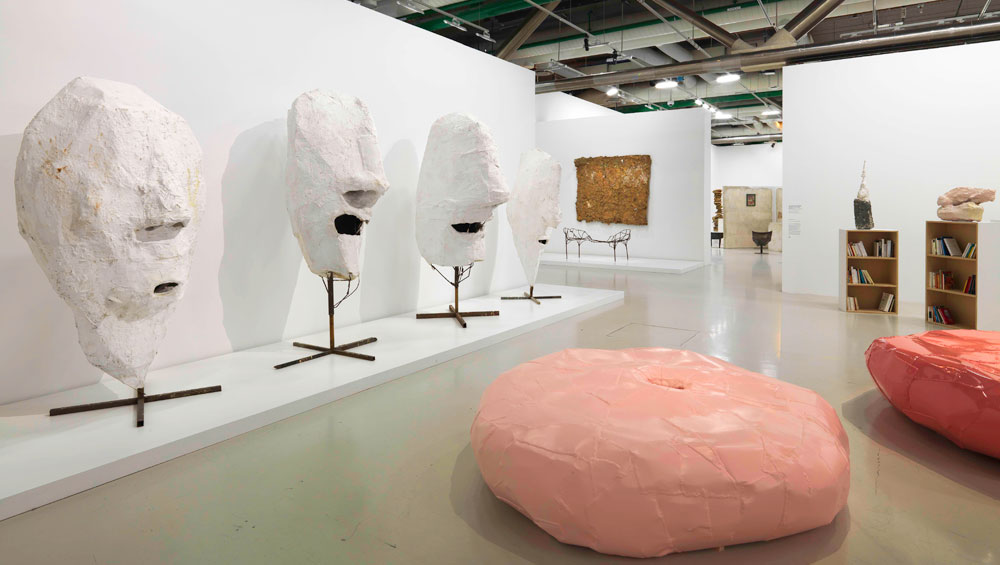
Franz West retrospective, installation view, Pompidou Centre, Paris. Photo © Philippe Migeat - Centre Pompidou.
Pompidou Centre, Paris
12 September – 10 December 2018
and
Tate Modern, London
20 February – 2 June 2019
by IMOGEN GREENHALGH
A man dressed in a light, rainproof jacket hooks his arm around a long metal rod. A protuberance of white papier-mache and plaster balloons from one end of the staff. He juts out a shoulder and poses theatrically for the woman he is with, who crouches next to him with her iPhone, laughing. She stands and draws a clinical white curtain across the cabin in which they are standing, screening them both as she hands him the phone. In the neighbouring cabin, two women balance a strange, misshapen baton between them, gripping each other’s arms. A knot of onlookers gathers round, while a gallery invigilator offers words of encouragement. The playful scene melts away as it began, the participants returning to the flow of visitors passing through the gallery space. It is a Monday morning, but there is a peculiar sense of playfulness in the air.

Franz West retrospective, installation view, Pompidou Centre, Paris. Photo © Philippe Migeat - Centre Pompidou.
The jovial, slightly self-conscious atmosphere is courtesy of Austrian sculptor Franz West (1947-2012), with the scene unfolding in the opening room of his posthumous retrospective currently at the Centre Pompidou. West placed interaction at the centre of his art, prioritising his viewer’s physical engagement with the work he made. Within this first room are numerous of his Paßstücke (an invented neologism meaning something close to “adaptable fragments”), several of which can be handled, hugged, clutched and caressed during the show’s run. The bare, curtained cubicles are his invention, too, providing a white cube within the white cube, and an ambiguous space somewhere between public and private, stage and dressing room.
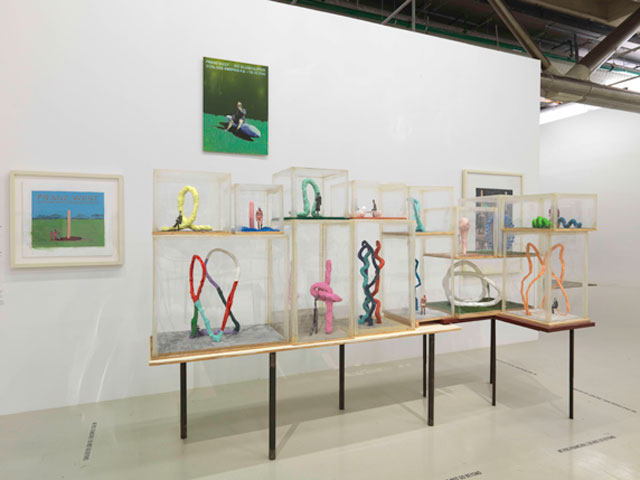
Franz West retrospective, installation view, Pompidou Centre, Paris. Photo © Philippe Migeat - Centre Pompidou.
The Paßstücke are one part of a vast, multimedia corpus of work that numbers 6,000 pieces, ranging from maquettes and collage, to posters, furniture, film and monumental sculpture. The exhibition, organised in conjunction with the Tate (it arrives in London in 2019), presents a selection of 200 or so of these, suggesting ways in which West enriched numerous topics within contemporary art: relational aesthetics, artistic homage, bricolage and public sculpture. When West showed his work, he mixed up genres and periods, and liked to bring in the work of collaborators and friends. Acknowledging that any imitation of this singularly personal approach would inevitably fall short, the curators from the Pompidou and Tate have opted instead for a linear, chronological tack, anchoring visitors in the passage of time.
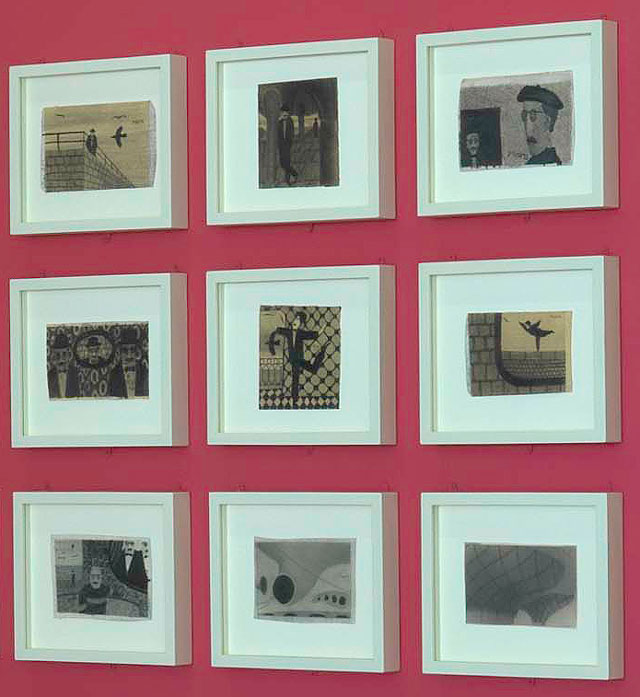
Franz West retrospective, installation view, Pompidou Centre, Paris. Photo © Philippe Migeat - Centre Pompidou.
The show’s progress traces the growing confidence of a sculptor who, until he was 30, received no formal training, eyeing the mainstream art world from a mischievous remove throughout his life (among his major works is Étude de couleur (1991), a fully operational urinal – take that, Duchamp! – installed in places including Nice and Münster.) Here in Paris, the exhibition opens with a series of diminutive graphite drawings from the early 70s, mostly depicting well-to-do, bespectacled men with neat moustaches. Though they bear little resemblance to his later work, the figures pose improbably, with legs and arms akimbo. Not yet a maker of portable sculpture or furniture, for West the body is already an object of irreverent curiosity. In bowler hats and bow ties, his men plié and pirouette to form a kind of statement of intent.
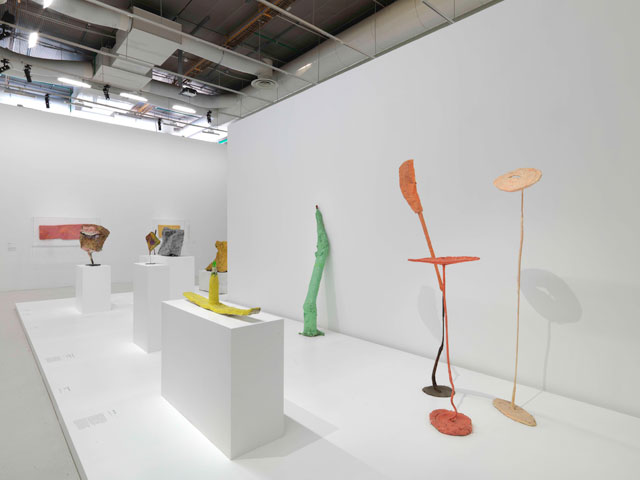
Franz West retrospective, installation view, Pompidou Centre, Paris. Photo © Philippe Migeat - Centre Pompidou.
The Paßstücke arrive relatively soon after, with West first creating them in the mid-70s as props for him and his friends. Seldom appreciated as “art” until the 80s, here, a number are presented on plinths, no longer able to be handled – a regrettable byproduct of both his market value and their papery fragility. But even ensconced on plinths, they make for an unruly bunch, with rough, flaking surfaces and odd, ungainly forms. Each hovers somewhere between function and the impractical – West often incorporated tools into them, alluding to use through a handle, spout or brush head. And their relationship as prostheses for the body is not straightforward either. For a start, they are stiff and cannot easily be worn. In fact, they are altogether unwieldy. Once you pick one up, you appear ridiculous. Rest assured, that’s the point.
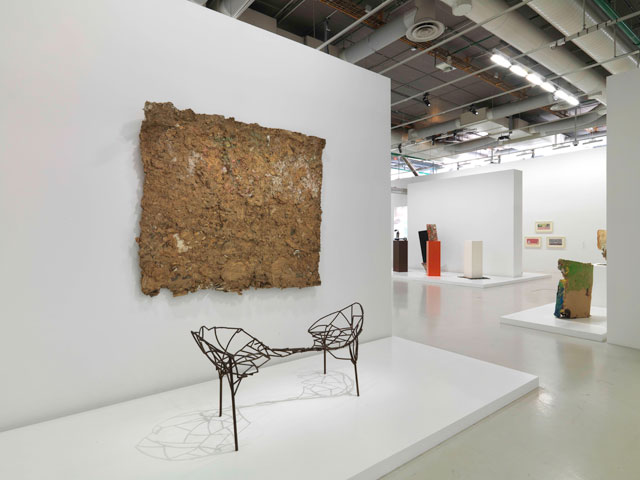
Franz West retrospective, installation view, Pompidou Centre, Paris. Photo © Philippe Migeat - Centre Pompidou.
From these assemblages, the show moves through to a series of colourful papier-mache sculpture that West began to produce in the mid-80s, using cheap, lo-fi materials such as paper, cardboard, telephone directories and foil. Part of a broader enquiry into what constitutes “legitimate sculpture” (also his name for his own works that were too big to handle), they teeter, lean and skulk at awkward angles, often referencing one or more avant-garde artistic traditions, which West mulched together for his own ends. There is a wall-mounted work covered in gold-leaf (Idiosyngramm, 1985) that nods to Byzantine art and the Viennese jugendstil. Giacometti is present in the thick, encrusted surfaces. West borrows from Joseph Beuys and Constantin Brâncuși, and plays freely with the conventions of actionism, arte povera and abstract expressionism, the baggage of the contemporary sculptor, shouldered with an almost insouciant ease.
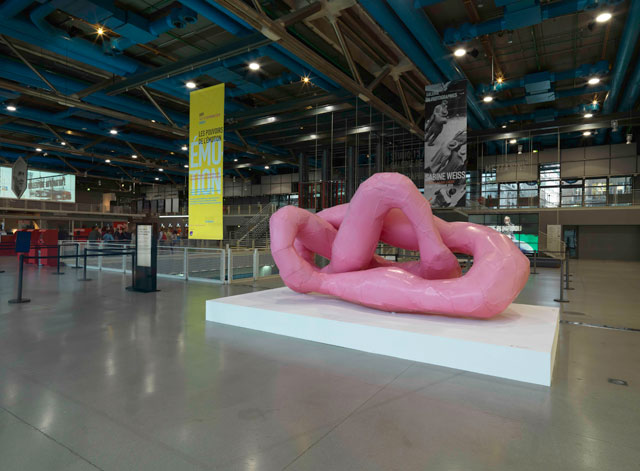
Franz West retrospective, installation view, Pompidou Centre, Paris. Photo © Philippe Migeat - Centre Pompidou.
The arc of the show leads on to public sculpture via furniture and “‘environments”, where he assembled furniture and artwork by himself and others. Some objects, such as his oversized Pepto-Bismol pink Cool Books (a play on the Italian buca del culo, or “arsehole”), conflate the sculpture/furniture categories, and visitors sprawl luxuriantly, selecting books from a handful of nearby cases (which double up as plinths for smaller sculptures – another of West’s ideas). For West, idleness and lounging were all part of the creative experience: “[Art] can be combined with the concept of ‘source of inspiration’ (Muse) and the concept of leisure (Muße), in the sense of ‘idleness’ (Müssiggang), and vice versa.”
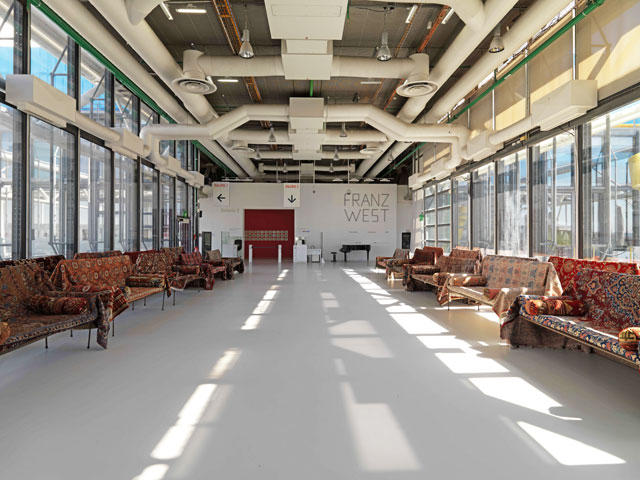
Franz West retrospective, installation view, Pompidou Centre, Paris. Photo © Philippe Migeat - Centre Pompidou.
His brightly hued, bulbous sculptures for the outdoors, usually made from lacquered aluminium, constitute his riposte to the grand register of public sculpture. Hot-pink phalluses, lime-green squiggles and fluorescent sausages have materialised in public gardens and squares around the world, represented within the show via a charming collection of his hand-made maquettes. Presented in Perspex boxes along with cut-out photographs of friends for scale, the relationship between the body and these abstract forms remains fundamental, even at scale. There are also numerous places to sit and chat: outside the show are a group of his divans, draped in Persian rugs, on which you are invited to relax.
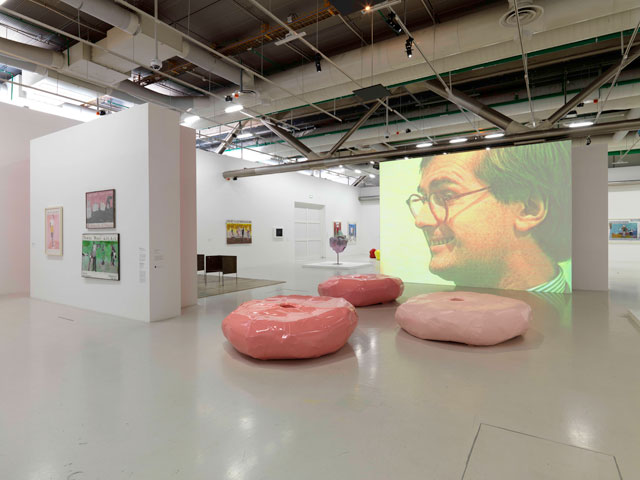
Franz West retrospective, installation view, Pompidou Centre, Paris. Photo © Philippe Migeat - Centre Pompidou.
Marshalling an artist as multifarious and prolific as West is something of a Sisyphean challenge, and the exhibition is careful not to become overly vigilant, alluding to the vast philosophical hinterland that fuelled his ideas with the lightest of touches. As you navigate the show, you might slip up and lose your footing. What is this title about? Can we sit on these chairs? What about this giant pink doughnut? Should I have read more Wittgenstein? The world of Franz West leaves you feeling slightly scrambled, if wholly absorbed. Take a seat, relax, and let it percolate. That’s surely the way West would have wanted it to be.